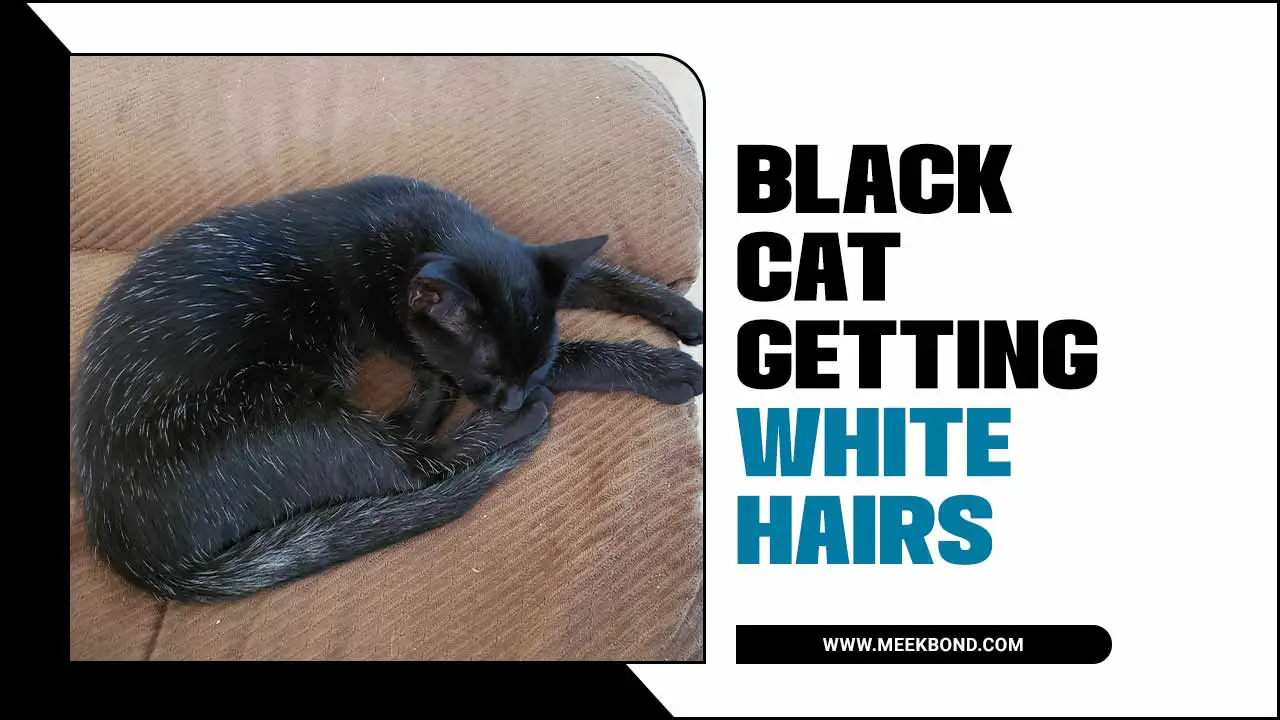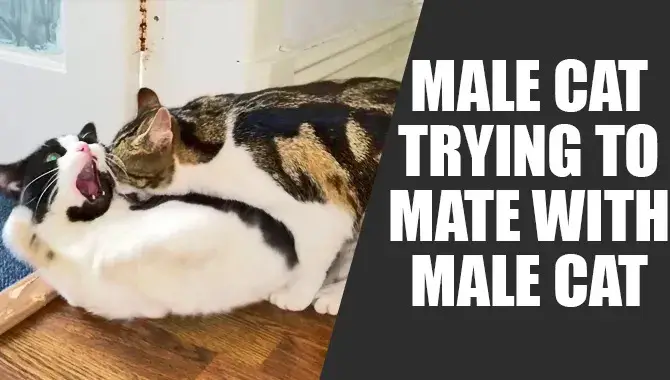It’s never too early to start thinking about kitten care. Whether you’re new to cat ownership or have experience for years, it’s always important to get ready for kitten emergencies.
This blog will outline the easiest and most effective way to move kittens and moms after birth – without any stress for either party. By following our tips, you can ensure that your kittens get a safe and healthy upbringing and that mom cat can rest and recuperate afterward. So why wait? Start planning your kitten relocation today.
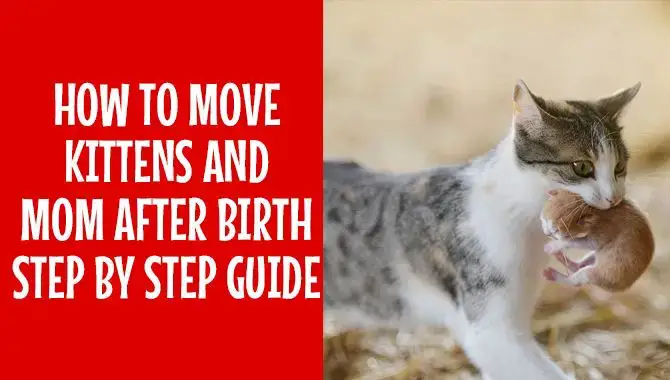
Move Kittens And Mom After Birth- Follow The Step Below
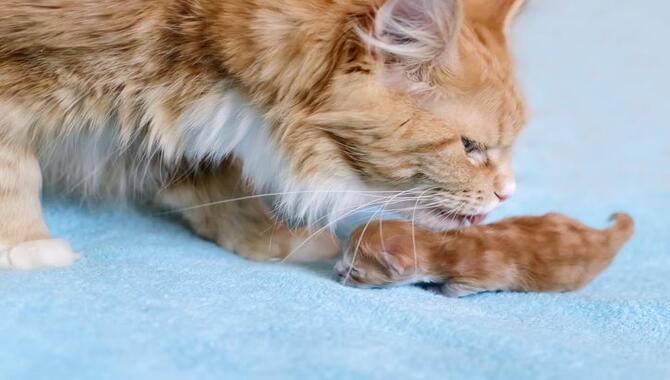
After giving birth, it’s important to transfer both kittens and their mother to fresh air as soon as possible. But how do you do it without traumatizing them? The easiest way is by following these simple steps. First, get a cardboard box or reusable container big enough for the cats and momma.
Second, place some soft towels in the bottom of the box or container. Third, put your kittens in first, so they’re lying down on their backs with their heads above water. Fourth, lift up momma gently and place her in the box or container, followed by her kittens.
Fifth, keep mum cool during transport by providing shade from overhead if possible. Last, place a pool noodle at the bottom of the box or container to provide additional insulation. You’re all set.
Is Doing So Necessary?
While There’s no need to move mom and kittens if they’re healthy and happy. Moving them can help prevent life-threatening situations. Such as littermates may chase away the mother cat or injuries for kittens in a fight over territory. If you decide to move your cats, do it soon after giving birth so the mother can get some rest and the kittens have time to adjust to their new surroundings.
It is always best to keep kittens and moms together as much as possible. in some cases, you may need to move them for their safety. Before doing so, ensure they are warm, dry, and fed – and most importantly, safe. If you decide to move the kittens and mom, follow these simple steps:
- Make sure the kitten(s) are calm before carrying them outside
- Place them inside a box or carrier of some sort
- Cover them with a soft cloth or blanket
- Transport them in an enclosed vehicle
When To Intervene After Your Cat Has Kittens
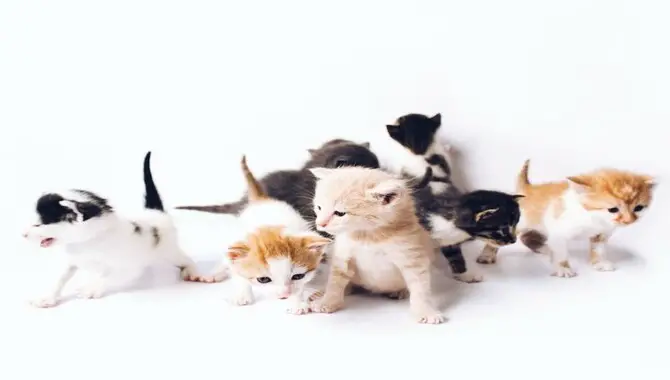
The process of having kittens is undoubtedly a life-changing event for both mom and kittens. But for mom, it can also be an anxious and stressful time. If this is the case for your cat, it may be time to intervene and move them and the kittens. To do this, follow these simple steps:
1. Talk to your cat in a low voice, so they understand you’re coming to help.
2. Approach cautiously, keeping a close eye on them and the kittens at all times.
3. If necessary, use a cardboard box or towel as a makeshift shelter for the cats while you transport them.
4. Be patient – the sooner you move them, the better. And remember, always keep the kittens safe and warm by providing them with a litter box and plenty of care and love.
Should You Move Newborn Kittens??
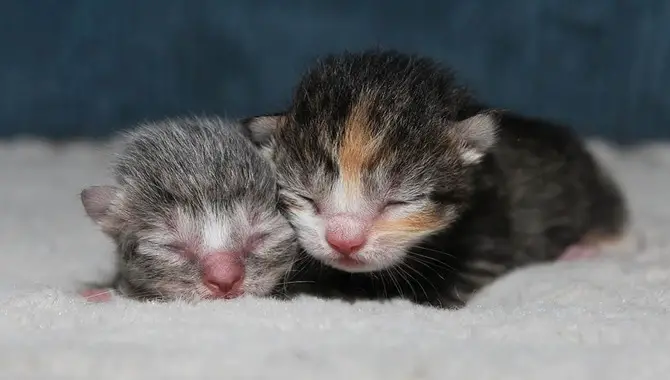
Choosing whether or not to move newborn kittens can be a tough decision. But, if you’re concerned for their safety and welfare, there are plenty of reasons to consider it. Here are the main reasons you should consider moving newborn kittens: 1. They may be feeling uncomfortable or unsafe in their home environment
- Their mother may be stressed and unable to care for them properly
- The kittens might not have enough food, water, or shelter
- If conditions are too dangerous or unfavorable for the kittens to stay in their home, then moving them is the best option for their safety.
Always consider the kittens’ feelings before making any decisions – never move a kitten without first talking to them and their mother.
Why Or Why Not
There are a few reasons why you might decide to move newborn kittens. If their mother is unable or unwilling to care for them properly, for example, it may be in the kittens’ best interest to move into a new home. Likewise, relocation may be necessary to protect their safety if conditions in the kittens’ home are too dangerous – such as lack of food or water.
Remember to keep the kittens safe and warm during transport, using a cardboard box or towel as their temporary shelter. And be patient – moving newborn kittens can take some time, so don’t rush into anything.
How To Observe Momma Cat’s Behavior After Giving Birth
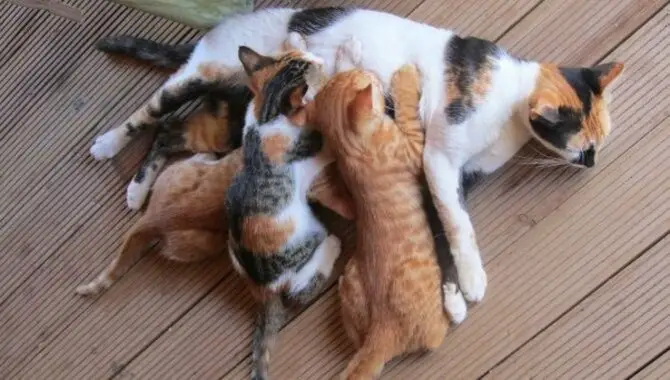
Kittens have a lot of energy and need plenty of care and attention. This is why it’s important to observe the mom cat’s behavior after giving birth. Doing so allows you to move the kittens safely and keep them warm until their family can find them.
Here are some key signs that it’s time to move the kittens: mom starts nursing and carrying around kittens a lot, and kittens start growing faster. When these behaviors start, it is safe for you to pick up the kittens and take them somewhere they will be safe and warm until their family can find them.
Spending $1 per hour caring for kittens helps shelters care for more animals! So, whether you’re a first-time cat mom or you’re just looking to make life a little easier, observing a mom cat’s behavior is the best way to go.
Signs Of Healthy Newborn Kittens

There are a few key signs that newborn kittens are healthy. These include:
- They’re energetic and playful
- Their eyes are open and they’re taking in plenty of information from their surroundings
- Their mouths, ears, and noses are clear of any discharge or mucus
It can be nerve-wracking moving kittens and their mother after birth. But it’s one of the most important moments of their lives. As long as everything goes according to plan, newborn kittens will be active and playful, and their mother will be in good condition.
Don’t hesitate to take them to the veterinarian if anything goes wrong. Once everything is moved in, it’s safe for you to bring them all inside for now. Give your kittens plenty of love and attention while they’re inside – they’ll appreciate it.
Create A Proper Space For Mama To Raise Her Young
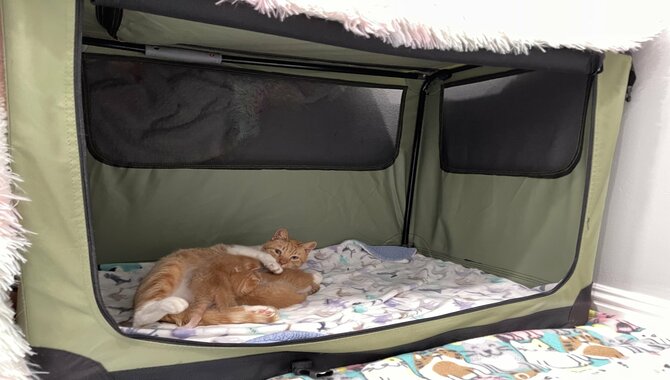
After kittens are born, their mother needs a safe and comfortable place to raise them. The most important factor is to provide a space that’s large enough for Mama and all of her kittens, including their food, water, litter box, scratching post, and toys. It’s also important to install a gate or door so the enclosure can be closed off when not in use.
Furthermore, provide fresh food and water for Mama and her kittens throughout the day/night cycle. By following these simple tips, you’ll be able to create the perfect space for Mama to raise her kittens.
Care For The Kittens
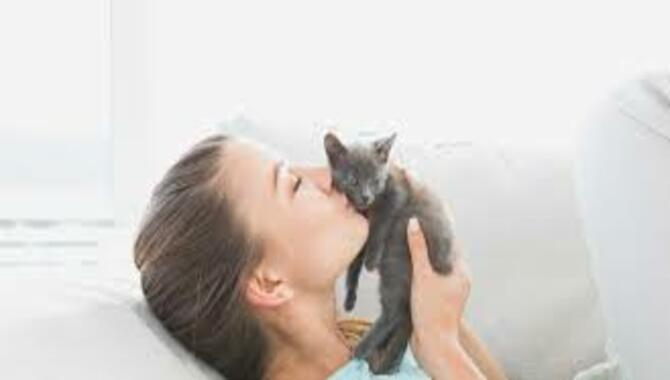
It can be a tough transition for kittens when their mom is taken care of during the move. Here are some tips on how to make the process as smooth as possible for all involved.
First, ensure the kittens are moved to a safe and warm place. They’ll need all the energy they can get to adjust to their new home. Ensure they’re fed and hydrated and keep an eye on their health – kittens can easily get sick.
Additionally, ensure plenty of fresh oxygen in the area – kitten breath smells terrible. Finally, be there to help the kittens get adjusted. Provide food, water, shelter, and love – they’ll appreciate it.
Care For The Mama
Moving kittens and moms after birth can be a stressful experience for all involved. That’s why caring for both of them as best as possible is important. Follow these simple steps, and everything will go smoothly – Mama will get the care and love she needs, and kittens will heal quickly and be ready for their new home soon.
Ensure the room is kept warm (around 76 degrees F), provide bedding, food, water, and sunlight, and allow Mama to rest as much as possible. And last but not least, make sure she has access to a litter box so she can urinate and defecate without stress.
For Kittens Aged 8+ Weeks

Kittens are playful and curious creatures that need plenty of stimulation to grow and thrive. Around eight weeks, kittens will start to wake up early in the morning and explore their new surroundings. If you see your kitten behaving aggressively or being overly territorial with others, it is time to take action.
This indicates that they might not be getting enough love from their mother cat. In fact, by around five-seven days old, kittens should be relocated within 24 hours if possible so they can get closer to their mother and begin learning her habits.
Kittens are also physically and emotionally vulnerable at this stage, so make sure you’re always there for them. Keep an eye on your kitten’s temperature as they can easily catch a cold if not taken care of properly after birth.
Conclusion
After giving birth, it’s important to ensure that kittens and momma cats are safe and secure. Moving newborn kittens can be challenging, but with the right planning and preparation, it can be done easily and without any stress. This blog outlines the steps necessary to safely move kittens and momma cats after birth.
Make sure to read through all the tips on moving kittens and moms after birth before getting started. Best of luck with your new kittens.
Frequently Asked Questions
How Do I Move A Kitten After Birth?
Kittens need plenty of food, water, and exercise to grow into healthy cats. Here’s a list of supplies you’ll need to get started: – A cardboard box – Bedding or towels – Cat litter (or formula if the mother isn’t eating) – Food and water dishes – Collars/leashes if needed.
Can You Move Cats And Kittens After Birth?
Moving kittens and cats during the newborn stage can be very stressful for both of them. To make the relocation process as smooth as possible, it is important to follow these simple steps:
Create a safe and calm environment for the kittens and moms by placing soft materials such as pillows around them and feeding them food and water.
Get the cats inside as soon as possible after birth and place them in a confined area where they will feel safe.
Wrap mom in a cloth or blanket (not too tight) and transport her gently in an appropriate carrier.
How Do You Transport A Kitten And Cat, Mama?
The first thing to remember is that kittens are fragile and can’t travel very well. They need to be transported in a comfortable environment with plenty of food and water, and they should be placed in a carrier that’s big enough to turn around. Mama cats should also be transported in a carrier so she can nurse her kitten at the new home.
How Long After Kittens Are Born Can You Touch Them?
Kittens should be handled as soon as they are born, but Mom will not object if you handle her kittens for the first few hours post-birth.
Once they are seven days old and have opened their eyes, you can start handling them more often. Touching mom during this time helps to establish a positive mother/kitten bond and reduces the chance of future behavioral problems.
Will A Mother Cat Reject Her Kittens If You Touch Them?
Well, no. But kittens will instinctively cling to their mother during the first few days of their lives. Do not try to force kittens into another container if they’re reluctant.
They may panic and refuse food or water afterward. If you are trying to move a kitten and its mom, it is important that you do not try to pick them up by the scruff of their neck.

Aquarium passion is all about connecting with the aquatic life and providing education to the public on the importance of these creatures. We showcase a wide variety of marine life through our exhibits as well as working with schools to provide unique learning opportunities for students of all ages.


